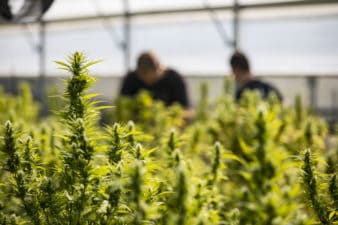Troubled Canadian marijuana producer Aurora Cannabis (TSX:ACB)(NYSE:ACB) released its fiscal Q2 2020 results on Thursday, confirming management’s prior guidance on February 6, and there could be some operating positives on the way that could lift the pot stock later this year.
A further 26% sequential revenue decline to $56 million was indeed exacerbated by an over $10 million charge for returns and provisions for returns and price adjustments, just as a sales halt in Germany and a seemingly dying wholesale market dragged sales performance, but the $1.3 billion net loss for the quarter after nearly $1 billion in one-time charges was indeed agonizing.
All hope isn’t lost yet.
The near-term upside
The once-bloated operating expense lines have been significantly dealt with after recently announced restructuring efforts which target reducing quarterly selling, general, and administrative (SG&A) expenses down to $40-45 million by June this year from nearly $100 million during the recent past quarter. ACB could be much closer to positive operating cash flow than before.
Given a current 150,000 kilograms production run-rate and a shift to high-demand strains, the recent launch of Cannabis 2.0 edibles products late in December, which added $3.3 million in revenue in one week of sales, and the resumed sales in Germany, the company could easily beat its $62 million conservative earnings guidance for the current quarter.
I like management’s recent introduction of a low-cost, focused brand that targets the budget-conscious consumer market. The new low-priced, high-potency brand Daily Special could take on the stubborn underground market at its game, but success may depend largely on provincial retail stores rollout this year.
Aurora’s low cash costs to produce a gram of cannabis remain below $0.90 a gram, and the company could use this low-cost producer tag as a competitive advantage to regain market share.
Gross margins should improve with resumed Germany sales, too. Moreover, the company has added capacity to export more product to the European market after the recent receipt of E.U. Good Manufacturing Practices certification for its third facility, which has a nameplate productive capacity of 28,000 kilograms per annum.
I’m still eager to see how the company’s U.S. expansion strategy looks, though. Management keeps mentioning that the United States market is one of their core target markets.
Potential challenges
Management is no longer as enthusiastic about the growth prospects in the company’s European Hemp segment with a 13.5% five-year average revenue-growth rate being used for impairment testing on E.U. hemp assets (resulting in a $7 million charge on property, plant and equipment).
Further, some once-promising revenue lines aren’t expected to generate any significant growth going forward, with Latin American operations expected to report only 3% annual sales growth rates over the next five years, yet there isn’t any significant revenue from Latin American operations currently.
Analytical testing services revenue has gone down significantly, and the same has happened to patient counselling services. These segments took impairment losses last quarter too; combined, the segments used to generate north of $2 million in sales quarterly, but they are down to under $700,000 and still shrinking.
Maybe the lower patient counselling revenue should explain the first decline in active patient numbers experienced last quarter, and I’d be worried if the recently stable medical cannabis sales were to start shrinking, too.
Most noteworthy, wholesale cannabis sales are almost gone. After reporting $20.1 million in wholesale sales during the June 2019 quarter, bulk pot sales declined by 88% to just $2.38 million by the December quarter.
As previously noted, HEXO and Aurora have taken significant knocks on the bulk cannabis revenue line, and I fear the same fate could affect Village Farms’s marijuana project, which has been more reliant on this market for some time.
Take note of the low cash balances on ACB, which could necessitate further dilution.
Could there be any further impairments on goodwill?
When testing for goodwill impairment, management used an estimated 49% annual sales growth rate for the cannabis segment over the next five years, and a $762 million impairment charge was taken to reduce the balance to $2.4 billion.
Given the recent weaknesses in revenue-growth rates across the industry, a nearly 50% growth rate could still be bullish. More impairment charges could follow if the ongoing new store rollouts and new product launches fail to generate desired revenue-growth rates.







